BLOG
2023 Chinese New Year Holiday Notification
Posted by admin in Company News on December 22, 2022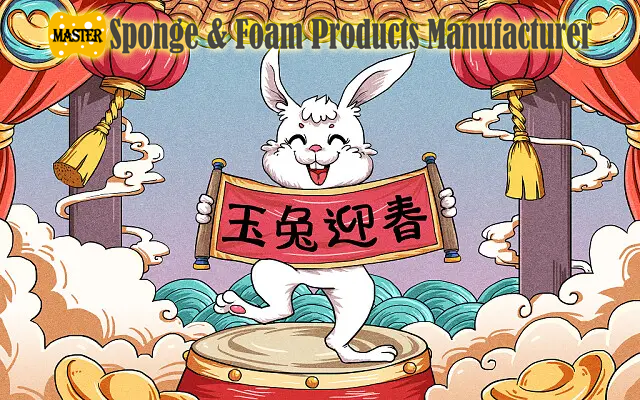
Dear valued customers,
Happy Year of Rabbit!
MASTER SPONGE will have the 2023 Chinese Spring Festival Holiday from 18th Jan 2023 until 28th Jan 2023.
Order date after 25th Dec 2022 may be handled after the holiday.
And during the CNY holiday, you are free to place orders or contact with us for any inquiry.
Thanks for your support and undertanding.
We’ll see you around.
Best regards,
Master Sponge Sales Team
2022 Chinese New Year Holiday Notification
Posted by admin in Company News on January 2, 2022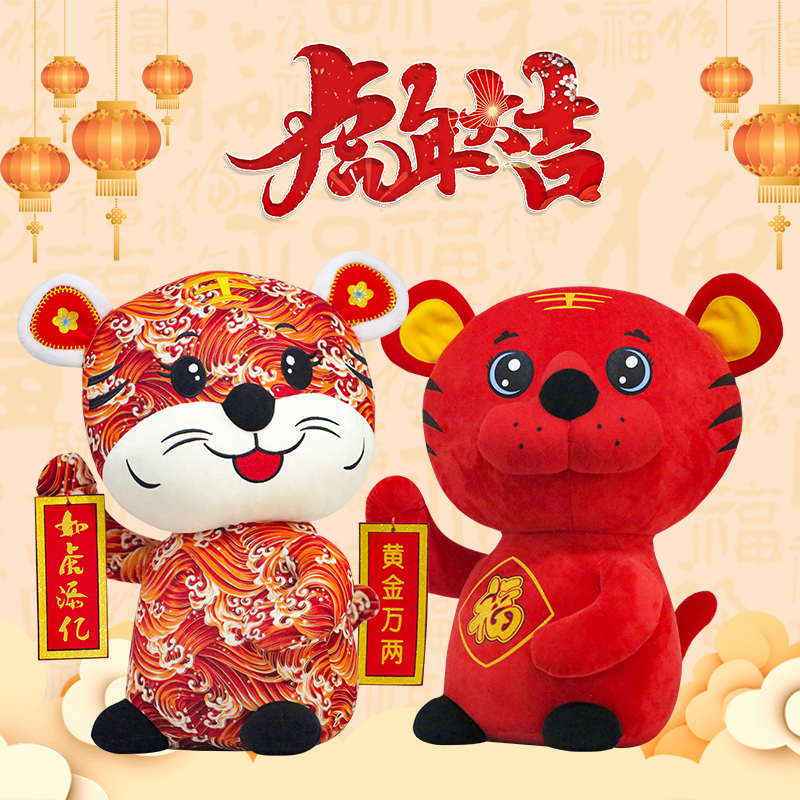
Dear valued customers,
Happy Year of Tiger!
Master Sponge will have the 2022 Chinese Spring Festival Holiday from 20th Jan 2022 until 10th Feb 2022.
Order date after 5th Jan 2022 may arrange shipping after the holiday.
And during the CNY holiday, you are free to place orders or contact with us for any inquiry.
Thanks for your support and undertanding.
We’ll see you around.
Best regards,
Master Sponge Sales Team
What’s different between Polyurethane foam, Polyether foam and Polyester foam?
Posted by admin in Product Information on July 18, 2021Polyurethane(PU) foam mainly includes polyester foam and polyether foam, which can be sliced or rolled, and can also be processed by composite processing, hot pressing and blasting for open-cell structure according to customer requirements. PU foam is involved in various industries, including automobile industry, battery industry, cosmetics industry, bust underwear manufacturing industry, and furniture manufacturing industry due to its heat preservation, heat insulation, sound absorption, shock absorption, flame retardant, anti-static, and good air permeability.
Polyether foam has better water resistance, antibacterial resistance and low temperature impact resistance than Polyester foam, so polyether foam is ideal for aquarium and water treatment.
Polyester foam: In addition to the properties of polyether foam, it also has special properties such as oil resistance, abrasion resistance, corrosion resistance, high temperature resistance, and strong stretchability, and the product has uniform cells, good gloss, and composite adhesion to the fabric. Strong knot rate and other characteristics, widely used in high-end vehicle interiors, high-end fabric composite, flocking, cosmetics, printer consumables, filtration, and other fields. There is a simpler way to distinguish Polyether foam and Polyester foam: stretch the foam until it breaks. The polyester requires a lot more force and the elongation is greater than 150%.
| COMPARISION BETWEEN POLYETHER AND POLYESTER | |
| Hydrolytic resistance | polyether > polyester |
| Elastic resilience | polyether > polyester |
| Low temperature impact resistance | polyether > polyester |
| Moisture evaporation | polyether > polyester |
| Bacteria resistance | polyether > polyester |
| Tensile strength | polyether < polyester |
| Tear strength | polyether < polyester |
| Attrition resistance | polyether < polyester |
| Drug resistance | polyether < polyester |
| Transparency | polyether < polyester |
Open-cell PU reticulated filter foam 10 PPI – 60 PPI
Posted by admin in Product Information on May 28, 2021Open-cell Reticulated Filter Foam is made of polyurethane(PU) foam, with through-hole structure as the base material. It has better aerodynamic performance, small volume density, large specific surface area, high adsorption efficiency, and wind resistance. The coefficient is small. It can be widely used in the treatment of benzene, toluene, xylene and other organic gases, phenols, esters, alcohols, aldehydes and other organic gases and malodorous gases, and various gases with low concentration and large air volume containing trace heavy metals. The exhaust gas can be directly discharged after adsorption, concentration and purification.
Specifications and parameters:
Product features: easy to adjust the pore size, good air permeability, and can be cut arbitrarily.
Conventional size: up to 120*200 (㎝).
Conventional thickness: 3-800 (mm).
Common pore diameters: fine pores (45-80 PPI), medium pores (25-40 PPI), large pores (10-20 PPI)
Wind resistance: The gas linear velocity is 1.0 m/s, and the pressure drop is ≤42Pa (tested with a 4 mm thick mesoporous filter material.
Product performance:
(1) High opening rate
(2) Good air permeability
(4) Permanent flexibility
(5) Harmless to the human body, no pollution to the environment, no smell
(6) Water resistance, strong drainage after immersion
(7) Recyclable, it is easy to destroy, and there is no secondary pollution to the environment
Application:
Mainly used in the filter layer of air conditioners and air filters of vehicles, aquarium filters, heat-resistant porous mesh ceramics fired with mesh sponges, nickel alloy meshes sintered after electroplating, which can be used as metallurgy Industry filter materials and other uses.
Photos of 10 PPI – 60 PPI foam:
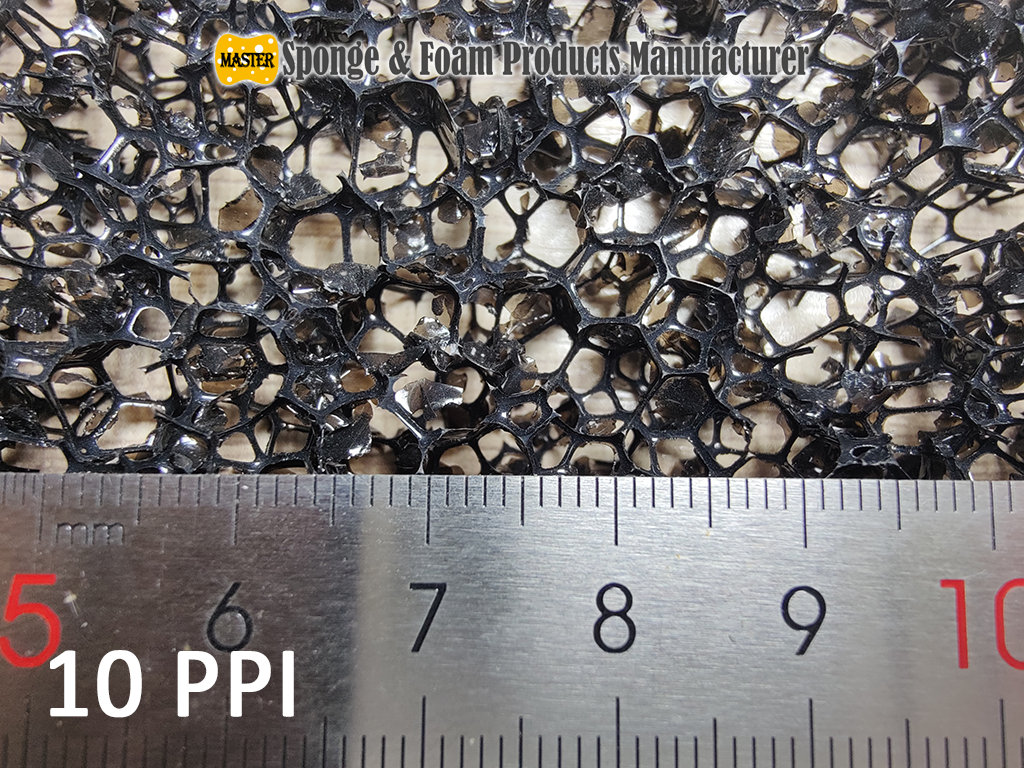
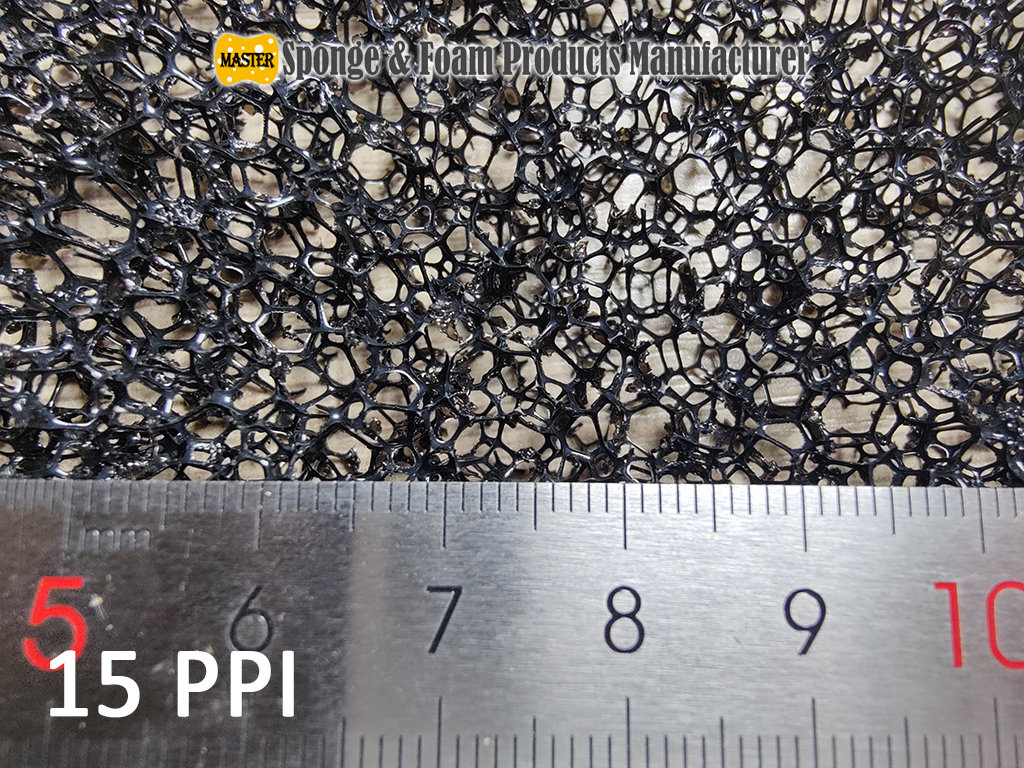
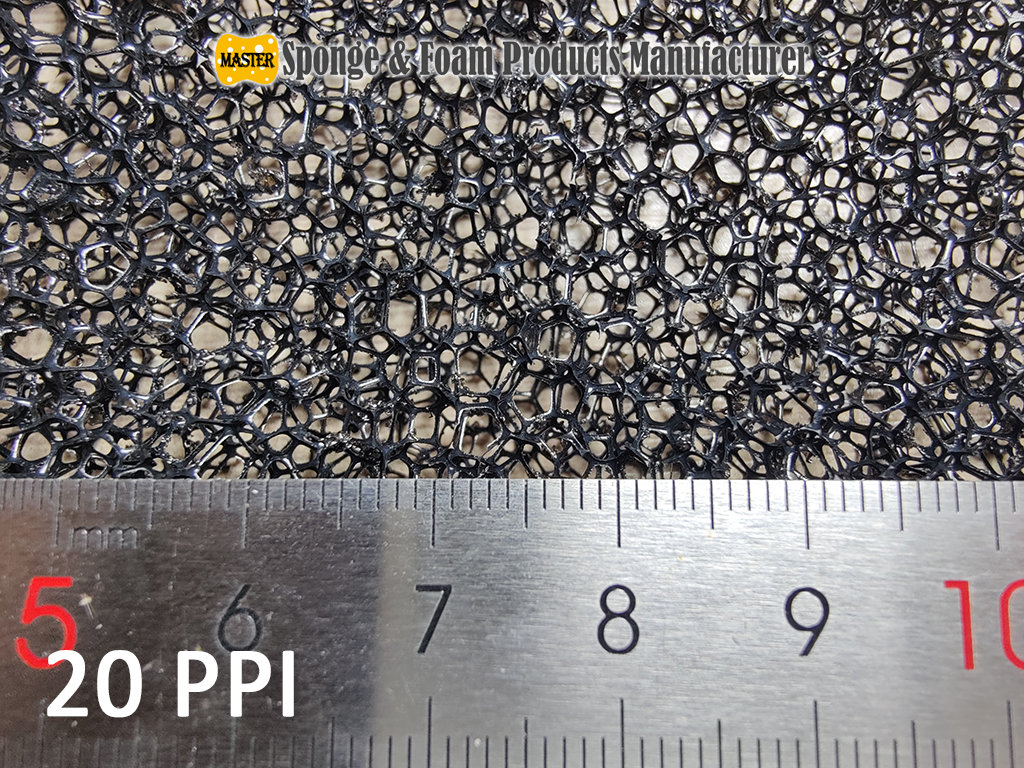
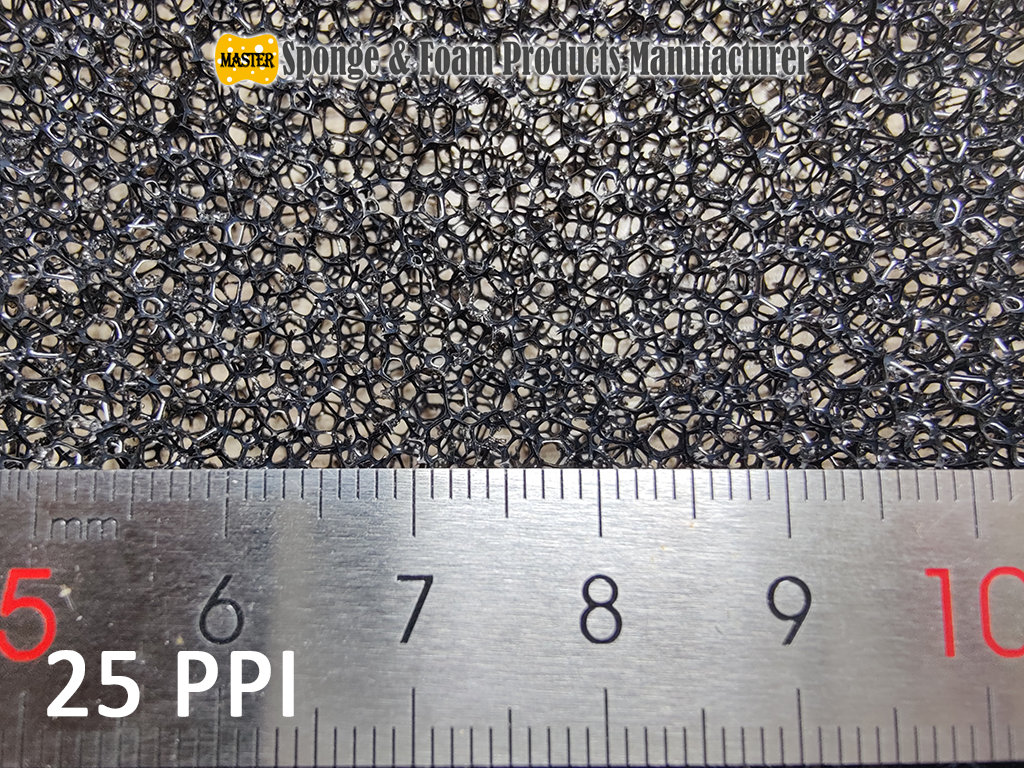
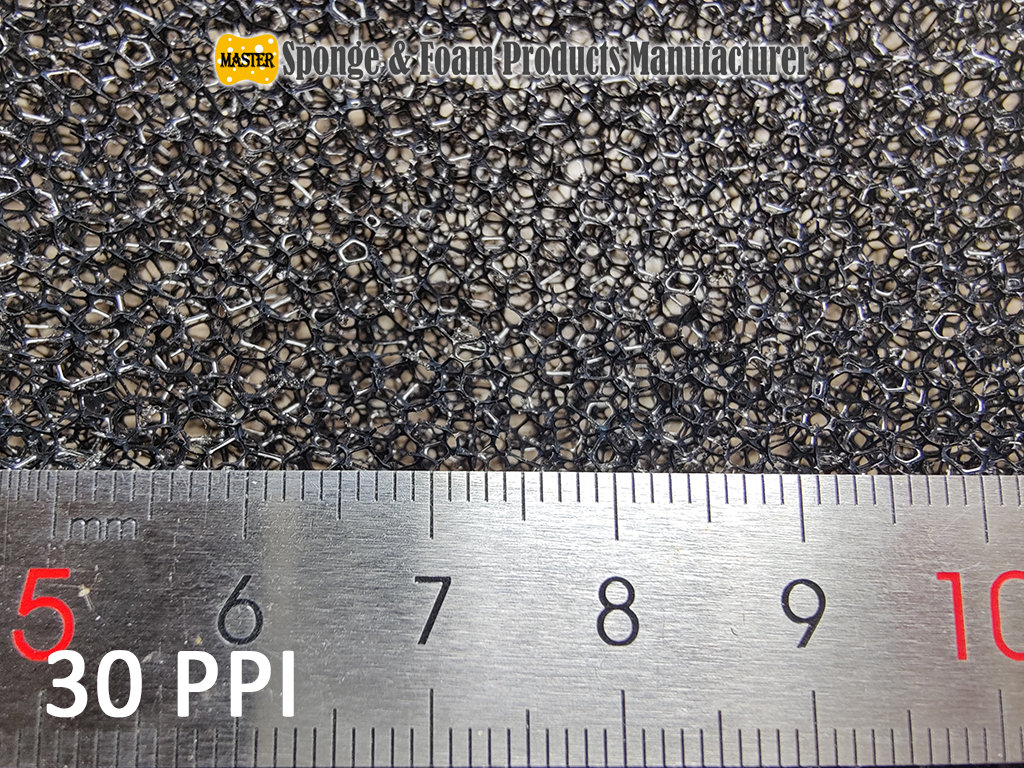
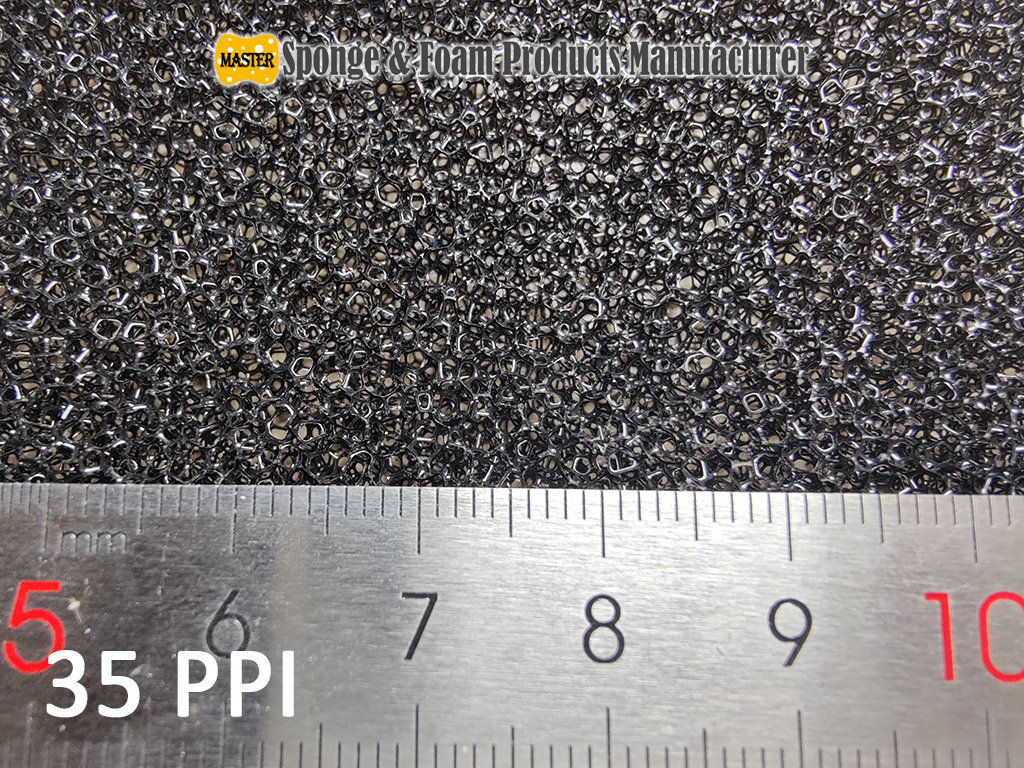
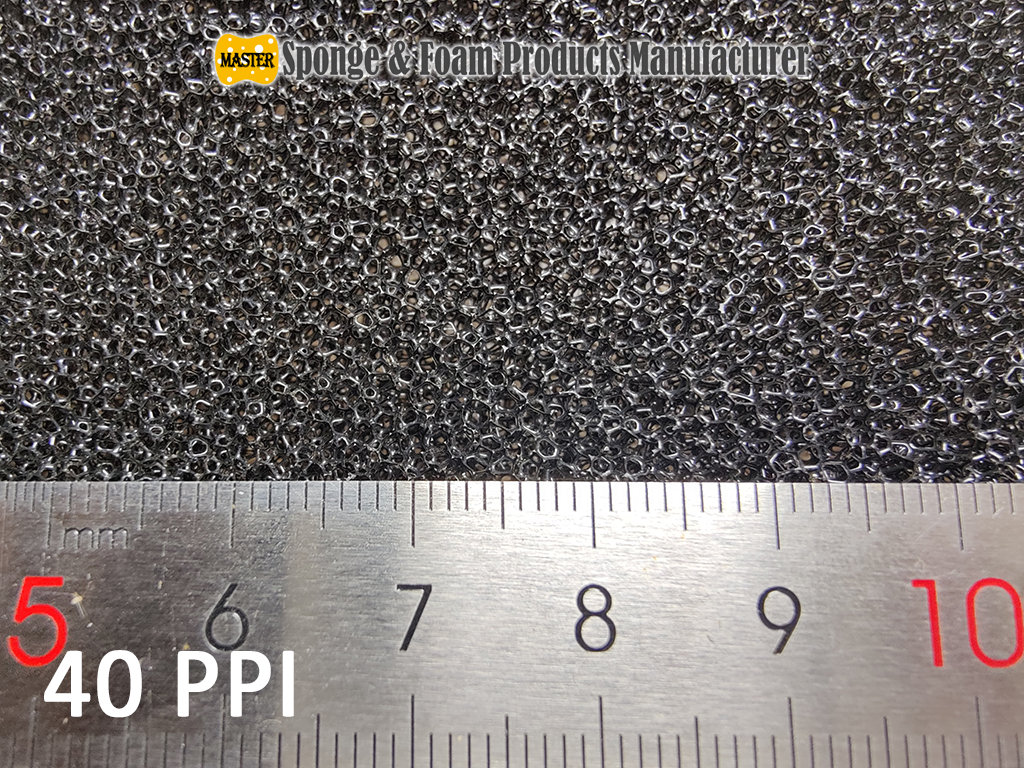
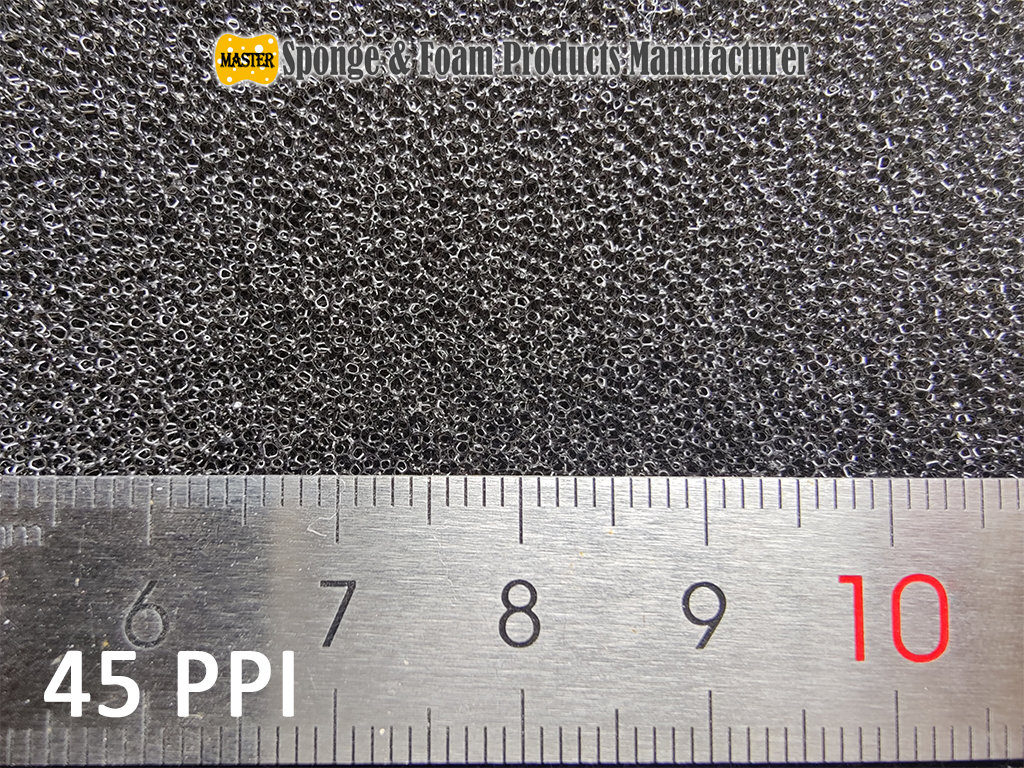
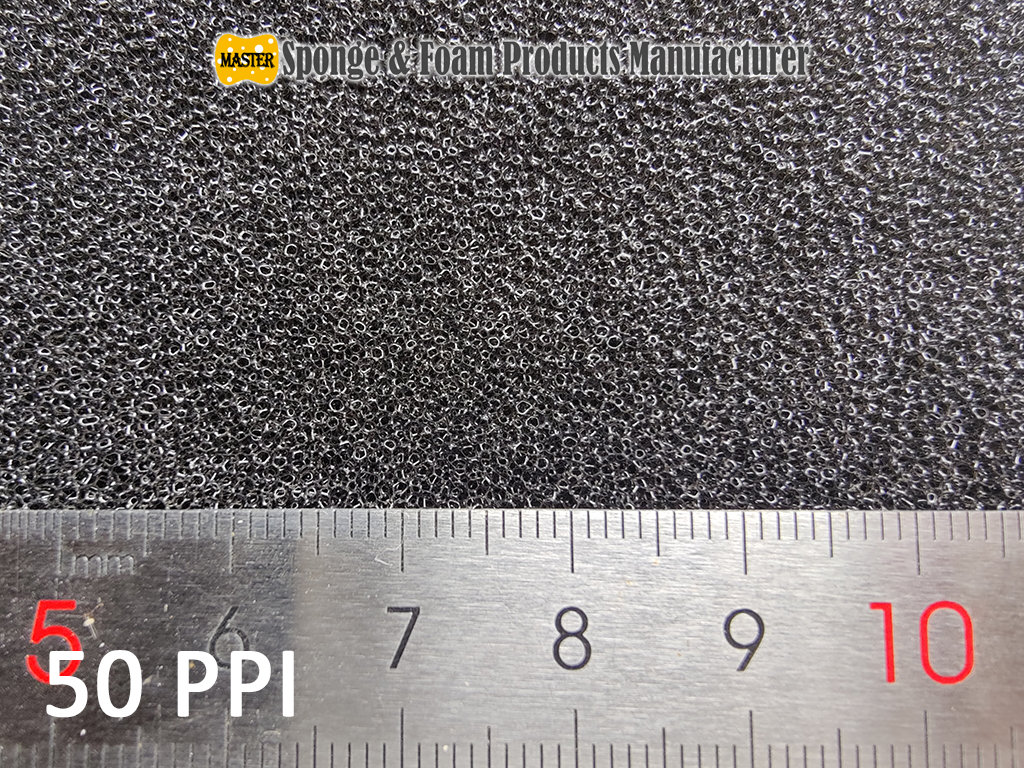
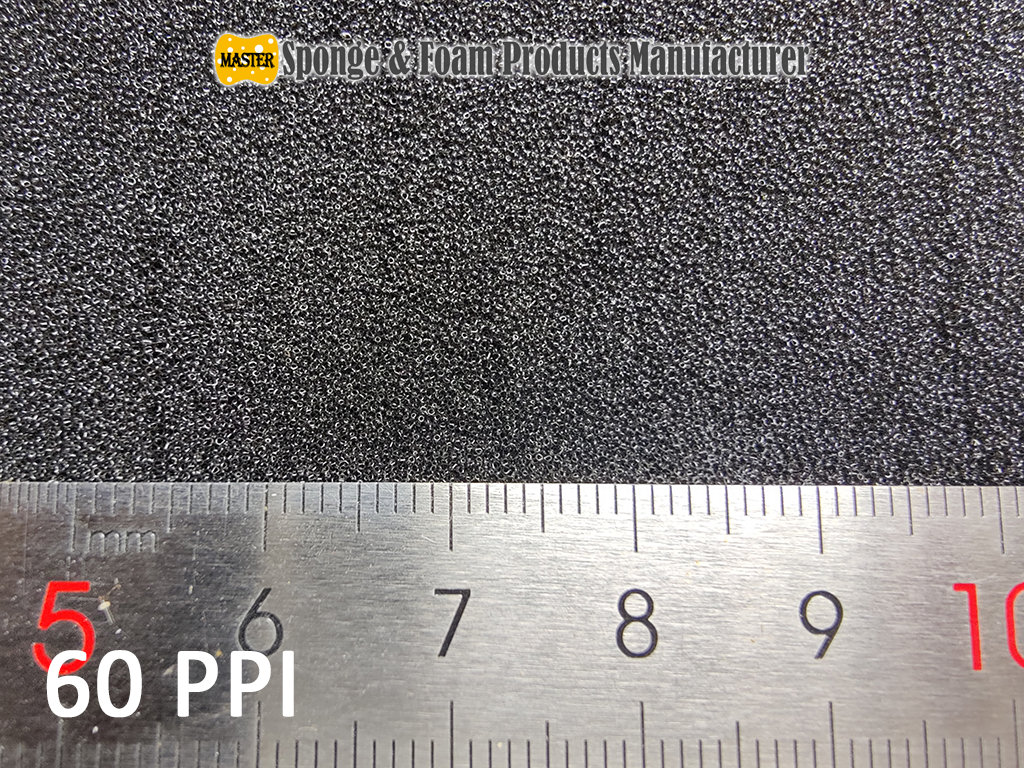
Wholesale Product: Compressed Dehydrated Cellulose Sponge(Facial Sponge)
Posted by admin in Product Information Tags: cellulose sponge, compressed cellulose sponge on April 28, 2021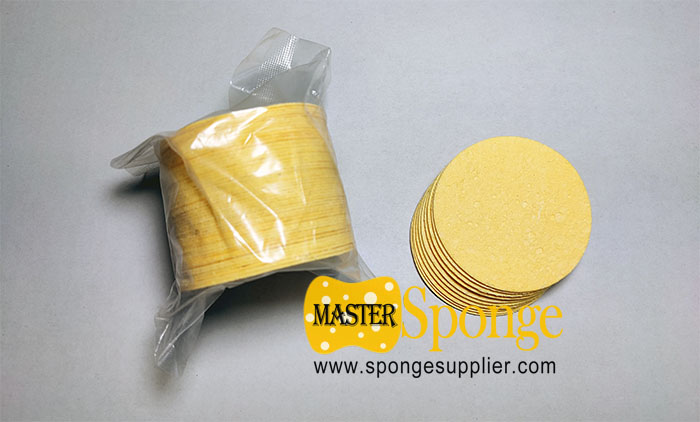
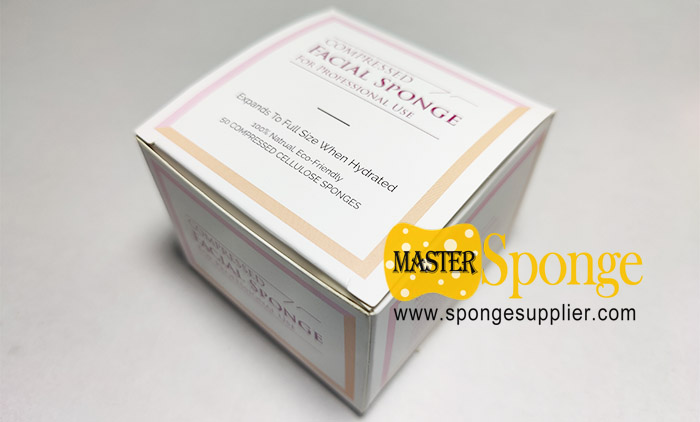
We have adequate inventory of the cellulose sponge. Small quantity order/wholesale, custom made with specific dimension or shape is available.
The following item is available for wholesale, please feel free to send inquiry if you are interests in it.
| ITEM NAME | Compressed dehydrated cellulose sponge(Faical Sponge) |
| DIMENSIONS | Φ65 x 1mm, expanding thickness when hydrated: 8-10 mm |
| PACKAGING | 50 pcs in one sealed polybag |
| WEIGHT | approx. 60g one bag |
| MOQ | 5,000 pcs |
Happy Labors’ Day 2021
Posted by admin in Company News on April 20, 2021
Dear valued customers,
Happy Labor Day 2021!
The internationnal Labors’ Day will come next week.
MASTER SPONGE will take 5 days off from 1st May 2021 to 5th May 2021.
However, if you have any question or inquiry, do not hesitate to contact us freely during the holidays, we will reply as soon as possible.
Sorry for the inconvenience to you.
We would like to take this opportunity to wish you and your families all the best for the nice holiday.
Best regards,
Master Sponge Sales Team
How many wavelengths of light can illuminate the photocatalyst material to get the best environmental purification effect?
Posted by admin in Product Information on July 21, 2020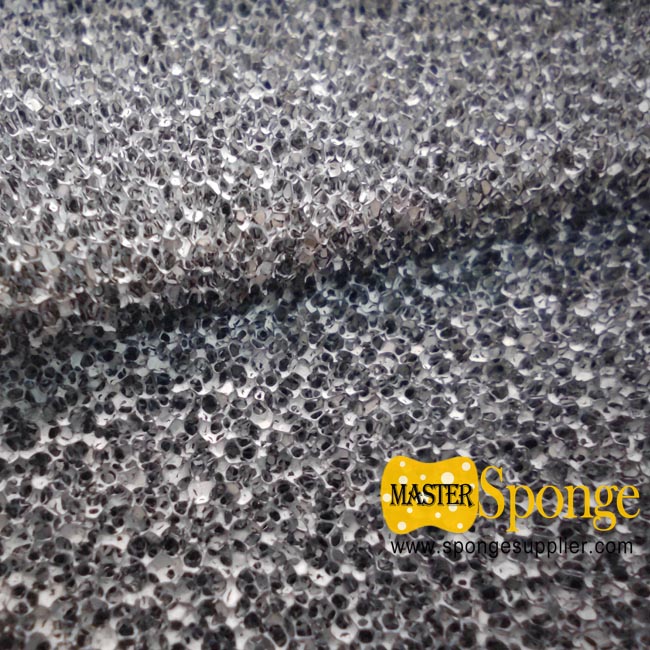
Photocatalyst reticulated filter foam
Photocatalyst is a general term for photo-semiconductor materials with photocatalytic function represented by nano-sized titanium dioxide. It is currently one of the materials used to control indoor environmental pollution in the world.
Under the irradiation of light, the photocatalyst will produce a photocatalytic reaction similar to photosynthesis, and produce free hydroxyl groups and active oxygen with strong oxidizing ability. It has a strong photo-redox function and can oxidize and decompose various organic compounds and parts. Inorganic substances can destroy the cell membranes of bacteria and the proteins that solidify viruses, kill bacteria and decompose organic pollutants, and decompose organic pollutants into pollution-free water (H2O) and carbon dioxide (CO2), thus having a strong sterilization, Deodorization, anti-mildew, anti-fouling, self-cleaning, and air purification functions.
In order to get the best photocatalytic effect, the wavelength of the UV-light should be less than 380nm.
Currently the most used is 254nm(commonly used ultraviolet lamp) or 365nm.
Because the shorter the wavelength, the stronger the energy, but the smaller the radiation range.
So in the large space, the 365nm will has the better effect than 254nm.
But in the small space, the 254nm will has the better effect than 365nm.
Master Sponge and Foam Products Manufacturer produce Photocatalyst Reticulated Filter Foam, which widely used in air conditioners, air purifiers, car purification systems, air purification in factories/workshops and other products.
[Notice] COVID-19 shipping impacts
Posted by admin in Company News on April 10, 2020Due to the current COVID-19 situation, many couriers have been affected by the pandemic, more flights have been cancelled, and the courier capacity is reduced, meanwhile the freight has raised a lot and the shipping schedule can’t be guaranteed.
Customers whose placed the sample or trial order in recently could experience extended shipping and delivery times due to the COVID-19 pandemic’s impact to our shipping partners.
Can the Reticulated PU Foam and the Activated Carbon Sponge filter the air?
Posted by admin in Product Information on October 20, 2019Regular Reticulated PU Sponge Filters are used in air purification to remove some large particles of pet dander and hair.
In practical applications, air filter manufacturers will use activated carbon to impregnate them, while filtering large particles, they can also remove volatile organic compounds such as TVOC, odor, formaldehyde and other harmful substances. It is popular as an initial filter in air purifiers and fresh air systems.
We call it Activated Carbon Sponge Filter.
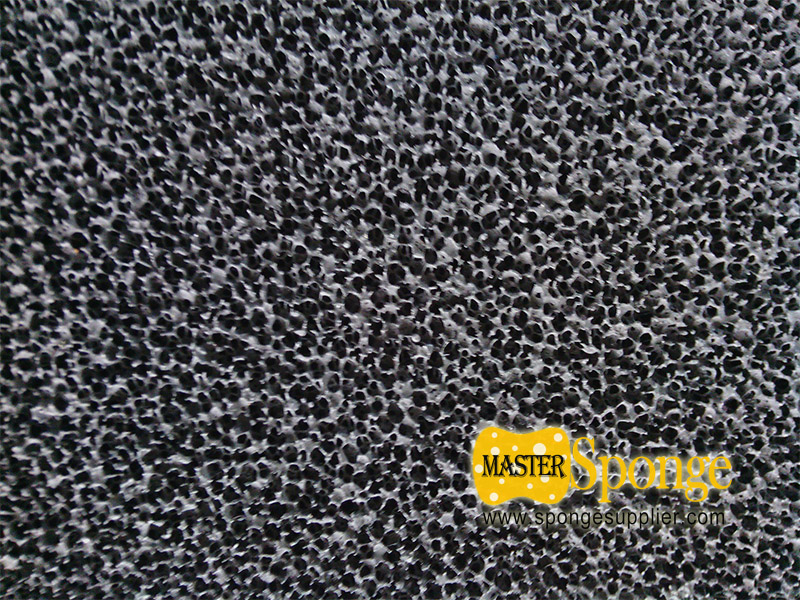
Activated Carbon Sponge Filter
Activated Carbon Sponge Filter can be used to remove volatile organic compounds and related pollutants such as large particles, odor, formaldehyde, voc, etc. in the air during air purification.
Honeycomb activated carbon sponges are often impregnated with activated carbon. Its carbon content is about 30-50%, and it has good adsorption performance.
Commonly used in air purifiers, home air conditioners, central air conditioners, air fresheners, range hoods, heaters, air conditioning fans, and special purpose duct filtration.
Product Features:
1. Adsorption performance: Benzene adsorption capacity: > 90%; Iodine adsorption capacity: 1000mg/g or more
2. Deodorization performance: 30 minutes for ethanethiol removal rate ≥ 90%; Trimethylamine removal rate ≥ 90%
3. Operating temperature range: -20 °C ~ 130 °C
Product specifications: thickness 3-25mm
So can the Activated Carbon Sponge Filter be washed?
Which performance is better than HEPA high efficiency filters?
Master Sponge and Foam Products Manufacturer tell you: Activated Carbon Sponge Filter is easy to deform after washing, the pore size will be enlarged, it is not recommended to wash. It can be replaced every 3 months. This layer of sponge filter acts as the first filter of the air filtration system. It can block some large particles for the HEPA filter high-efficiency filter in the back, reduce the burden of HEPA filter, and extend the life of the high efficiency filter relatively.
Obviously, Activated Carbon Sponge Filters have lower filtration performance for 0.3 micron microparticles than HEPA filters. The particle size of the particles filtered by the two is different. The HEPA filter has a higher filtration accuracy. The sponge filter has low resistance when purifying the air, but it cannot block the fine dust in the strong air flow. The HEPA filter is mainly made of high-efficiency filter paper, which can block more than 99.9% of the fine particles.
Classification Of Activated Carbon
Posted by admin in Product Information on June 20, 2019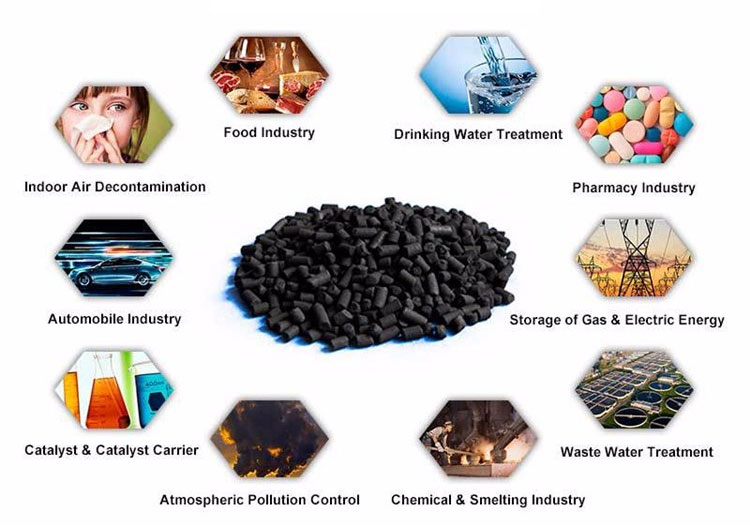
Activated carbon filter foam is one of our major products.
Activated carbon plays an important role in the industrial field and in daily life. Activated carbon is an excellent carbon adsorbent with a large specific surface area, stable physical and chemical properties, and good selective adsorption properties.
What are differences between types of activated carbon? How are they classified?
1. Classified by raw materials:
| CATEGORY | RAW MATERIALS |
| Coal-based activated carbon | Lignite, peat, bituminous coal, anthracite and etc… |
| Wooden activated carbon | Sawdust, charcoal, coconut shell, walnut shell, apricot shell and etc… |
| Petroleum activated carbon | Asphalt, petroleum coke |
| Regeneration carbon | Used charcoal |
2. Classified by appearance:
| CATEGORY | CHARACTERISTIC |
| Powdered activated carbon(PAC) | Powdery, mesh<80 |
| Granular activated carbon(GAC) | Granular, mesh>80 |
| Spherical activated carbon(SAC) | Ball shaped carbide being activated after carbonization, and raw material of a spherical resin also belongs to this class |
| Columnar activated carbon(CAC) | Using coal, wood chips and etc as raw materials, the appearance is cylindrical |
| Fibrous activated carbon(FAC) | Made of fibrous raw materials, diameter is 5-10μm. Generally felt, cloth, filament |
| Honeycomb activated carbon(HAC) | Produce by extrusion process |
3. Classified by different activation methods:
| CATEGORY | CHARACTERISTIC |
| Physical activated carbon | Produced by using water vapor, CO2, flue gas, air as activator |
| Chemical activated carbon | Produced by using chemicals such as zinc chloride, phosphoric acid, sodium hydroxide or potassium hydroxide as activators |
| Physical and Chemical activated carbon | Produced by using chemicals and certain gases sequentially or simultaneously |
We can produce activated carbon filter foam with different iodine value base on different types of the activated carbon as your requirement.











